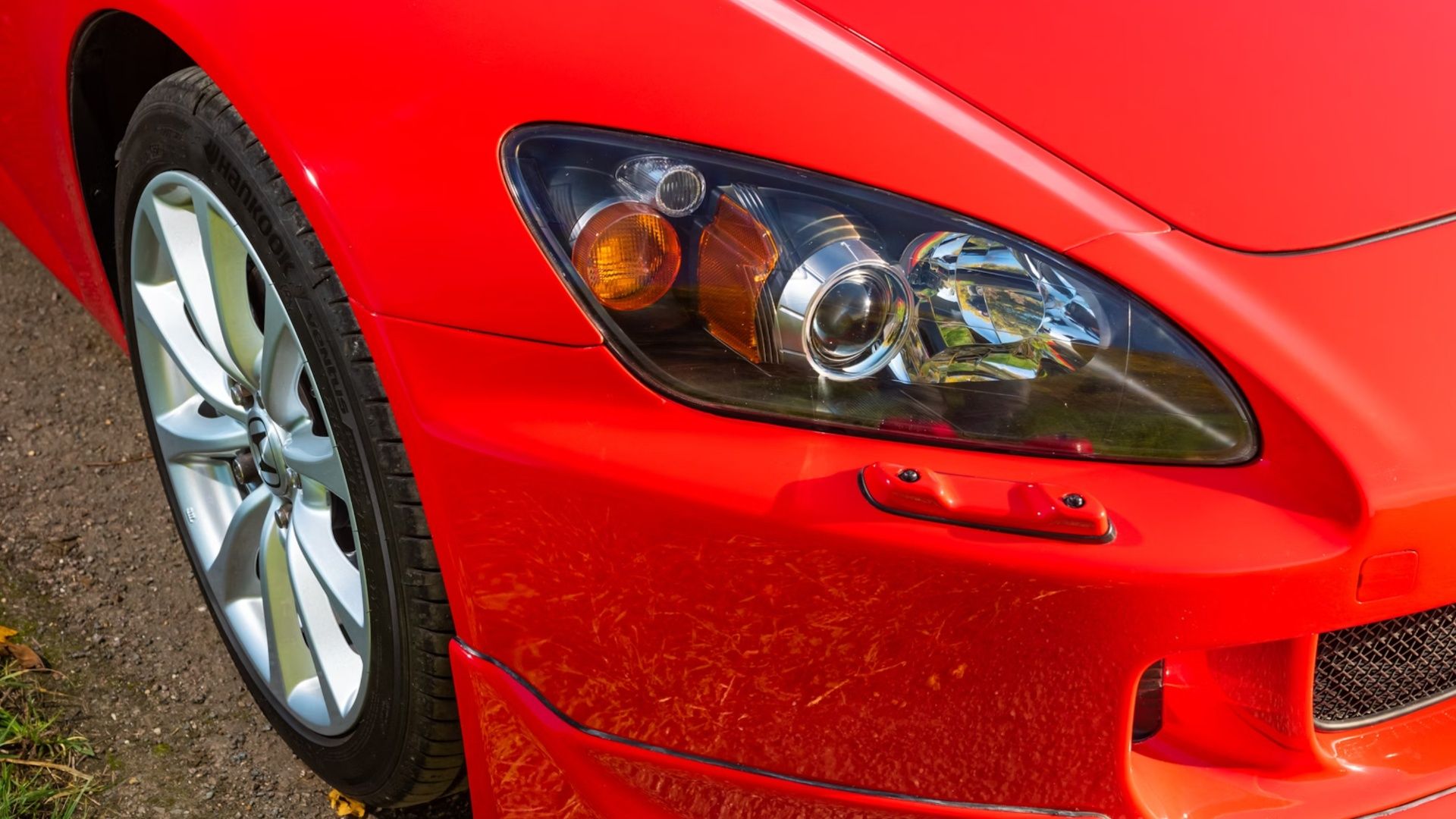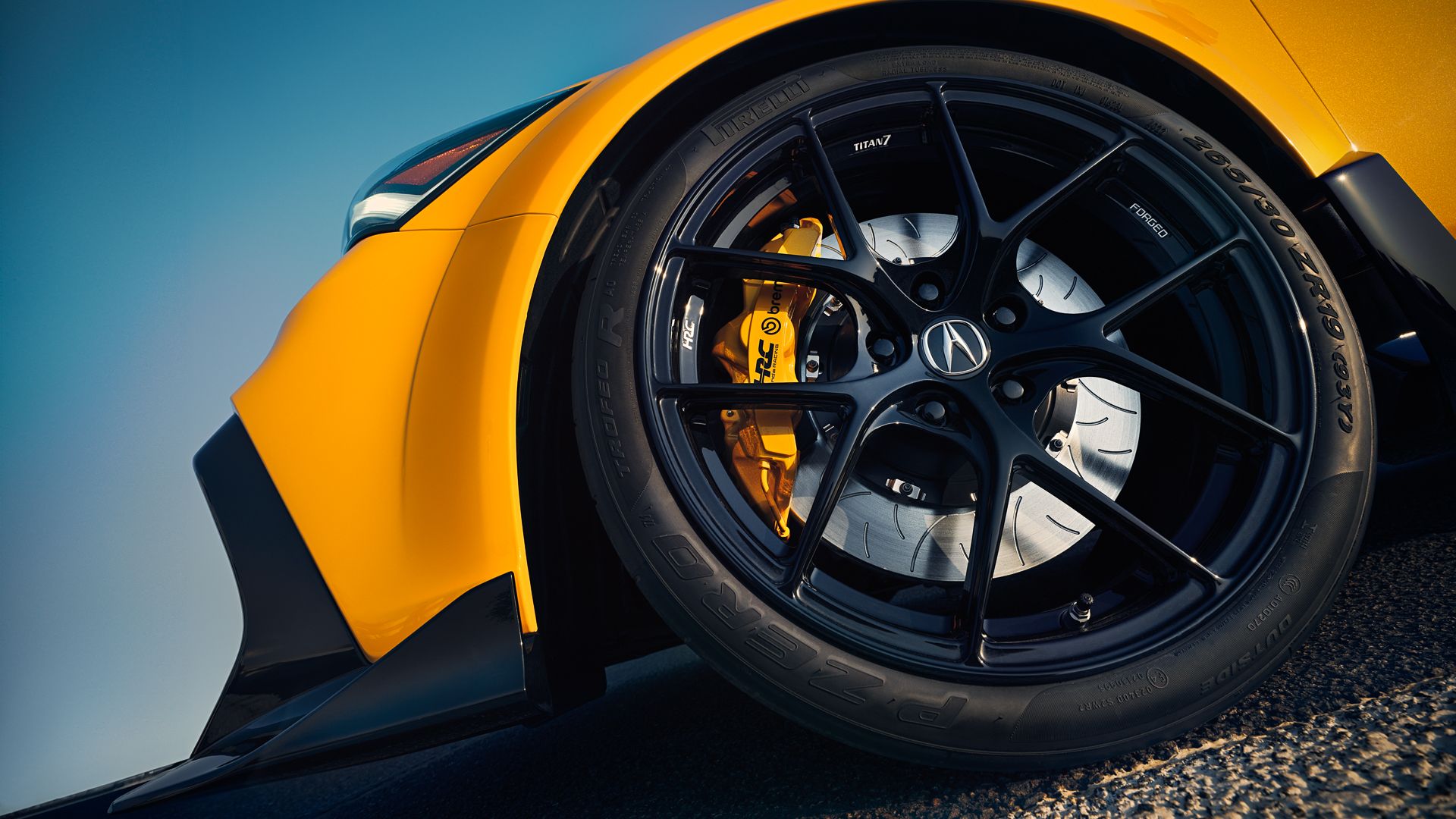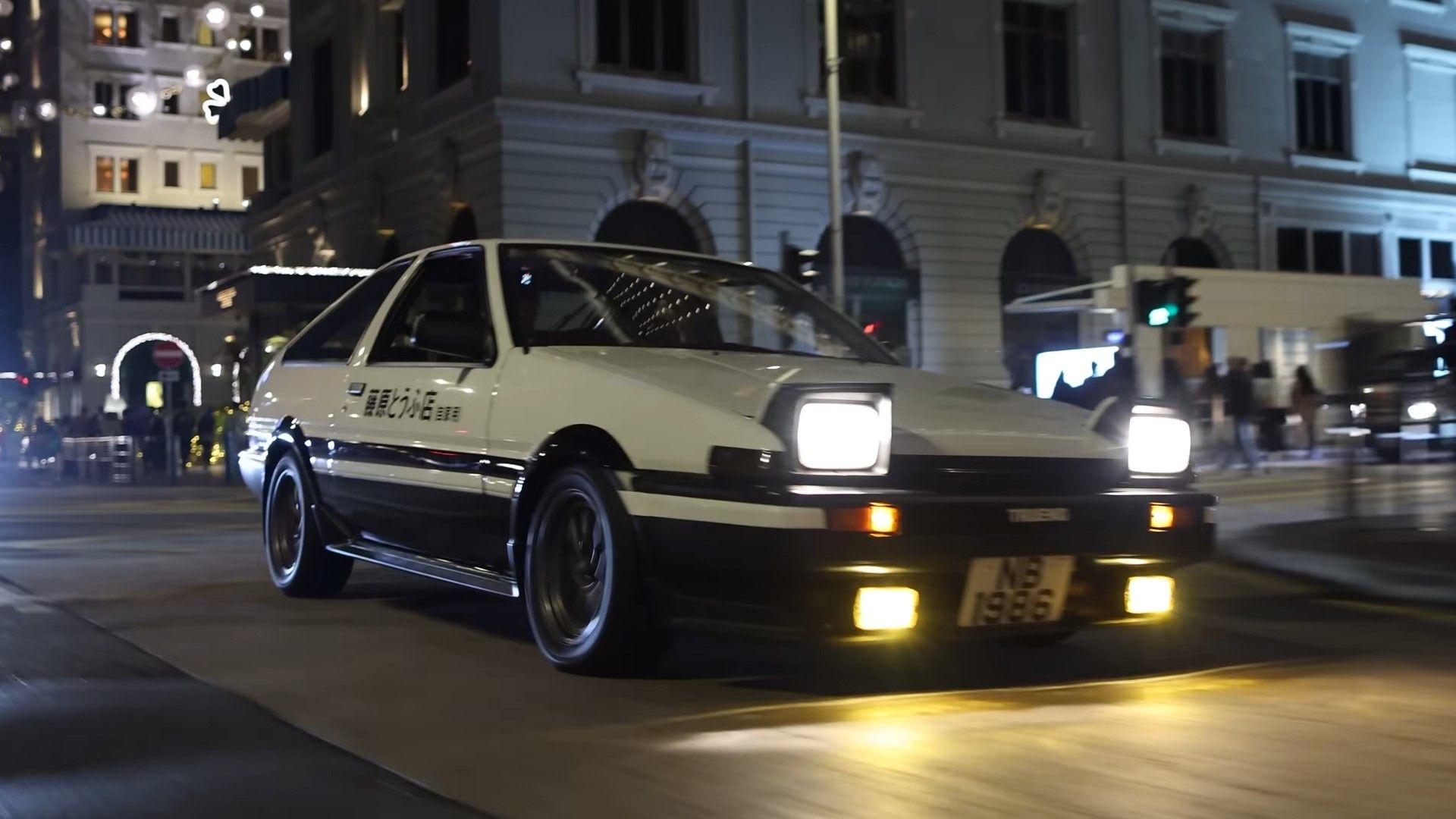Japanese car brands have a long legacy of giving enthusiasts relatively affordable motorsports-inspired performance cars that are a blast to drive. In quite a few cases, these thinly-disguised race cars only exist to homologate their motorsports counterparts, and they’re barely any different from the cars you might see on track or out on a rally stage, and every gearhead deserves to know about them.
The cars on this list all have different backstories. Several of them are homologation specials, designed purely so that they can be used in racing. Others are track-focused developments of regular sports cars that have race car-like performance. What brings them all together, though, is that they’re basically race cars in a road car disguise.

Related
Honda’s Affordable Sports Car That Beat Porsche At Its Own Game
This Honda showed the world that a budget sports car could rev like a Ferrari and outperform a Porsche for cheaper, and we still love it for it.
10
Nissan R390 GT1
Specs
|
Engine |
3.5-liter twin-turbocharged V8 |
|
Transmission |
6-speed sequential manual |
|
Power |
550 hp |
|
Torque |
470 lb-ft |
Source: Nissan
The Nissan R390 GT1 is a classic example of a homologation special. This was only built so Nissan could race their R390 race car in the GT1 class of sports car racing during the ’90s. It pretty much is a GT1 race car, with minor alterations to make it road-legal. To comply with the homologation rules, only one production road car was ever built. It’s stayed in Nissan’s possession ever since, and it only gets wheeled out occasionally for shows.
There are several limited-run or one-off GT1 homologation specials like the Nissan R390. But, the R390 is the only one of these one-offs to come out of Japan. It often gets forgotten, which isn’t surprising when this era produced cars like the Porsche 911 GT1 and the Mercedes-Benz CLK GTR. But, it’s definitely earned its place among the most legendary race cars for the road.
9
Lexus LFA Nürburgring Edition
Specs
|
Engine |
4.8-liter V10 |
|
Transmission |
6-speed automated manual |
|
Power |
562 hp |
|
Torque |
354 lb-ft |
Source: Lexus
The regular Lexus LFA is legendary enough as it is. Its V10 engine produces the most glorious sound made by any car ever, and it’s got performance that lets it hang with the best of the supercars of its day. The LFA Nurburgring Edition takes those characteristics and turns them up to 11. Only 64 of these cars were ever made, and they’ve got significant upgrades compared to the regular car. This includes a 10-hp power boost, a recalibrated version of the 6-speed automated manual transmission with slightly faster gearshifts, aerodynamic upgrades including canards and a front splitter, a huge fixed rear wing at the back generating up to 33% more downforce than the standard car, and super-lightweight magnesium wheels made by BBS.
The performance upgrades aren’t the only goodies you got from buying the Nürburgring edition, either. Everyone who bought one of these cars new also received a training session at the Nürburgring by the circuit’s chief instructors. This included a one-night stay at a luxury hotel in the area, free admission to the Ringwerk leisure park, a free Nurburgring-branded jacket, and a year’s free entry to the circuit. That’s a pretty amazing package for buying a limited-run Lexus!
8
Subaru Impreza WRX STi P1
Specs
|
Engine |
2.0-liter turbocharged inline-4 |
|
Transmission |
5-speed manual |
|
Power |
276 hp |
|
Torque |
260 lb-ft |
Source: Subaru
The first of the rally specials on this list, the Subaru Impreza WRX STi P1 is one of the best versions of the first-generation Impreza. It was conceived by Subaru’s European division as a way of combating the high demand for high-performance Japanese-market versions of the Impreza in the West. These cars were tuned up by Prodrive, the company that made and prepared Subaru’s rally cars at the time. The result was an absolute animal of a road car that was barely different from its rally-spec sibling in some ways. Its 2-liter turbocharged inline-4 engine produced 276 hp and 260 lb-ft of torque like Japanese-spec Impreza WRX STis, but many of its components were better optimized for European roads.
Giving European enthusiasts a car partially developed by the people who built Subaru’s rally cars as a way of stopping them importing Japanese-market Imprezas was a stroke of genius. While the grey import market for JDM-spec Impreza WRX STis has never stopped, these P1 versions were (and still are) incredibly desirable. It really is a race car in disguise in a lot of ways, and one that’s absolutely beloved.
7
Nissan Skyline GT-R R32
Specs
|
Engine |
2.6-liter twin-turbocharged inline-6 |
|
Transmission |
5-speed manual |
|
Power |
276 hp |
|
Torque |
260 lb-ft |
Source: Nissan
A list of Japanese sports cars that are basically race cars in disguise wouldn’t be complete without mentioning Godzilla. The R32 Nissan Skyline GT-R exists entirely because of Nissan wanting to be a top manufacturer in Group A touring car racing. Producing that gentleman’s agreement limit of 276 hp and 260 lb-ft of torque from its legendary RB26DETT twin-turbo inline-6 engine and having a sophisticated all-wheel drive system, the R32 Skyline GTR was genuinely one of the best performance cars of its day.
That all-wheel-drive system that made the R32 Skyline GT-R a grip monster on the road was actually a necessity for the racing version. Due to Group A rules on the balance of performance regarding turbocharged engines, the Skyline GT-R would be racing alongside big V8s like the Holden Commodore and the Rover SD1 Vitesse, and would have to use wider tires. The wider tires meant that Nissan could get a better competitive advantage out of using all-wheel drive, even though it made the car heavier than its rivals.
Many consider the R32 Nissan Skyline GT-R to be the best JDM car of all time. When you look at its origin story and how great its performance was for a late-’80s to early-’90s sports car, it’s not hard to understand why. A car doesn’t get a nickname like Godzilla for no reason! It was incredibly successful on the track, beating out many of its European rivals, and the road-going version could hold its own against them too.

Related
9 Most Track-Ready Sedans You Can Buy For Half The Price Of A BMW M3
Nearly $80,000 for a new M3 is a tall ask, but these 9 fast sports sedans are ready for the track for just a fraction of that price.
6
Mitsubishi Lancer Evolution IV Tommi Mäkinen Edition
Specs
|
Engine |
2.0-liter turbocharged inline-4 |
|
Transmission |
5-speed manual |
|
Power |
276 hp |
|
Torque |
275 lb-ft |
Source: Mitsubishi
Another rally special (from Mitsubishi this time), the Lancer Evolution IV Tommi Mäkinen Edition is easily one of the most desirable Evos ever made. It was built to celebrate Tommi Mäkinen’s massive success with the Lancer Evolution VI in rallying. The Tommi Mäkinen Edition is fairly similar to the standard Evo VI. The main differences are the close-ratio 5-speed transmission, lowered ride height, and additional cosmetic and interior details and upgrades. As part of those interior upgrades, the GSR trim got special Recaro seats with Tommi Mäkinen’s logo embossed on them. Thanks to the mechanical differences, some people refer to the Tommi Mäkinen Edition as an Evo 6 1/2 or 6.5.
While the Lancer Evolution IV Tommi Mäkinen Edition may not be that different from the standard Evo VI, the actual rally car that was based on it wasn’t that different from the road-going models. As a result, this car is a thinly-disguised race car. It’s one that’s incredibly desirable too, as examples have been known to sell for 6-figure prices!
5
Nissan GT-R R33 Nismo 400R
Specs
|
Engine |
2.6-liter twin-turbocharged inline-6 |
|
Transmission |
5-speed manual |
|
Power |
400 hp |
|
Torque |
347 lb-ft |
Source: Nissan
Following on from the success of the original Godzilla, the R33 Nissan Skyline GT-R was almost identical to its predecessor. The only real changes were makng the synchromesh stronger in the transmission and correcting the R32’s weak oil pump drive collar problem. The oil pump drive collar was a part that easily failed on the R32 when the power was pushed up higher. Nissan did make some special higher-powered variants of the R33 Skyline GT-R, though, and perhaps the best was the Nismo 400R. Only 44 examples were made, and they were all produced in 1997. It had a different version of the RB26DETT engine that was engineered and produced by REINIK (later REIMAXX). This was the same company that produced the engines for the racing versions of the Skyline GT-R. As a result, the Nismo 400R had 400 hp (hence the name) and 347 lb-ft of torque. It also had a lot of Nismo parts, including a Nismo exhaust system, intercooler system, clutch, brake pads, and aero kit.
The Nissan Skyline GT-R Nismo 400R has passed into legend as one of the best GT-R variants ever made. That’s not surprising, thanks to its racing-derived engine and abundance of Nismo parts. This is probably one of the most racecar-like GT-Rs ever made, and it’s all the better for it!

Related
10 Ways Japanese Cars Forever Changed Automotive Performance
Performance cars would have been a lot different without Japan.
4
Nissan GT-R Nismo (R35)
Specs
|
Engine |
3.8-liter twin-turbocharged V6 |
|
Transmission |
6-speed automatic |
|
Power |
592 hp |
|
Torque |
481 lb-ft |
Source: Nissan
The R35 GT-R has become one of the most celebrated sports cars in recent times. Its 3.8-liter twin-turbocharged V6 is very powerful from the factory, and it can be tuned to deliver absolutely astonishing power figures. It’s also not difficult to handle, thanks to its all-wheel-drive system. Those characteristics make it one of the easiest entry points into owning something with supercar or near-supercar levels of performance. The Nismo variant is one of the best versions of the R35 GT-R you can get from the factory. Producing 600 hp and 481 lb-ft of torque, this is a seriously powerful GT-R that can hold its own against cars that are much more exotic and expensive.
While the GT-R Nismo may look fairly similar to the regular GT-R, it does have some very interesting differences. One of those is that it has the same turbochargers as the GT3-spec racing version of the GT-R. That’s something you’d probably never guess unless you were told about it. It also gets a more track-tuned suspension with Bilstein adjustable dampers, lighter forged wheels, more aggressive aero, and lots of carbon fiber for weight savings.
3
Toyota Celica GT-Four (ST185)
Specs
|
Engine |
2.0-liter turbocharged inline-4 |
|
Transmission |
5-speed manual |
|
Power |
222 hp |
|
Torque |
224 lb-ft |
Source: Toyota
When it comes to rally specials, there aren’t many that are better or more beloved than the Toyota Celica GT-Four. That’s especially the case for the ST185 generation’s version of it. It’s probably one of the most recognizable Japanese sports cars ever, thanks to featuring in plenty of video games and being a staple of the World Rally Championship in its day.
Some people may also remember it for the scandal that involved its restrictor plates, widely regarded as one of the best motorsports cheats of all time. Whatever the case, the Celica GT-Four has rally DNA absolutely everywhere. That’s especially evident in the RC homologation special. It’s better known to European enthusiasts as the Carlos Sainz edition, named after the rally driver who was very successful with it (not the Formula 1 driver, that’s his son!), or the Group A Rallye to Australians. This version shared a lot of similarities with the rally car. This included a water-to-air intercooler instead of an air-to-air one (water-to-air units are more suitable for competition use), a different hood with a different air intake, a different front bumper, and some changes to the transmission.
Some people have gone as far as arguing that the Toyota Celica GT-Four is one of the best all-wheel drive sports car ever made. It’s small, light, agile, and that all-wheel-drive grip means that it’s just as fine on a gravel track or a muddy rally stage as it is on the open road or on a racetrack. It’s not too powerful to only be fun on a circuit, either. It’s a true classic in the Japanese sports car world, and one that in many ways is a lightly-disguised rally monster.
2
Toyota GR Yaris
Specs
|
2020-2023 |
2024-Present |
|
|
Engine |
1.6-liter turbocharged inline-4 |
1.6-liter turbocharged inline-4 |
|
Transmission |
6-speed manual |
6-speed manual, 8-speed automatic |
|
Power |
257-268 hp |
300 hp |
|
Torque |
266-273 lb-ft |
295 lb-ft |
Source: Toyota
The most recent entry on this list, the Toyota GR Yaris is yet another rally special. Created so that Toyota could homologate a 3-door Yaris for the World Rally Championship, this pocket rocket has a very characterful 1.6-liter turbocharged inline-4 engine coupled with a 6-speed manual or an 8-speed automatic transmission. The result of that is 300 hp and 295 lb-ft of torque, sent to the wheels through a rally-style all-wheel drive system. The GR Yaris really is a thinly-disguised race car in many ways. The version of the car we see in the World Rally Championship shares a lot of components with the road-going version. That’s thanks to an unusual development method, where the rally car was developed first, and a road-going version was made out of that rally car later.
Sadly, the Toyota GR Yaris isn’t available in North America. That’s due to the regular Yaris not being sold there. North America may have received the brilliant GR Corolla as a consolation prize, but a lot of gearheads would have loved to have had the GR Yaris.
1
Honda NSX-R GT
Specs
|
Engine |
3.2-liter V6 |
|
Transmission |
6-speed manual |
|
Power |
290 hp |
|
Torque |
224 lb-ft |
Source: Honda
The Honda NSX is widely considered one of the best Japanese cars ever made. It’s also thought of as one of the world’s most underrated supercars. The latter of those definitely has a lot of weight to it, considering that many people have forgotten that there was a crazy homologation special version of it! The NSX-R GT was created so that Honda could race the NSX in the GT500 class of Japan’s Super GT championship. The road-going version kept the same powertrain as the regular NSX-R from that era, but it had some absolutely crazy cosmetic and aerodynamic changes. This included a roof scoop!
As it was a homologation special made just so Honda could enter something competitive in Super GT’s GT500 class, only 5 of them were ever made. Only 1 of those production road cars is privately owned. It was originally sold to Yoshiaki Yoshida, the head of DHC Corporation (a Japanese health food and cosmetics company). He’s allegedly a huge NSX enthusiast and has owned several of them, so it makes sense that he’d be the only one to have a privately owned NSX-R GT.










